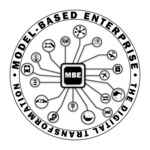 | MBE 2020: Model-Based Enterprise Summit 2020 National Institute of Standards and Technology Gaithersburg, MD, United States, March 30-April 3, 2020 |
| Conference website | https://www.nist.gov/news-events/events/2020/03/model-based-enterprise-summit-2020 |
| Submission link | https://easychair.org/conferences/?conf=mbe2020 |
| Conference program | https://easychair.org/smart-program/MBE2020/ |
| Submission deadline | December 6, 2019 |
| Final Paper Submission Deadline | February 14, 2020 |
| Presenter Registration Deadline | February 14, 2020 |
| Presentation Slides Submission Deadline | February 28, 2020 |
The goal of the MBE Summit is to identify challenges, research, implementation issues, and lessons learned in systems engineering, design, manufacturing, quality assurance, and sustainment of products and processes where a collection of data, models, and decisions for products and processes serves as the authoritative information source for all activities in a product's lifecycle. The theme of the MBE Summit 2020 is Increasing MBE Adoption and Implementation. There is no doubt that MBE requires a complex organizational work design that recognizes the interaction between people, skills, and technology in workplaces. The 11th MBE Summit is focused on highlighting the organizational culture surrounding MBE, needs of people operating in MBE, and real-world implementations of MBE in practice. Academia, government, and industry practitioners are encouraged to submit papers on topics related to this year’s theme using the following tracks: 1) Business Processes; 2) Organization Culture; 3) Technology; and 4) Workforce Skills. Submissions may align to any of the manufacturing-related domains; for example, Systems Engineering and Lifecycle Management; Design; Production and Fabrication; Quality and Inspection; and Operations, Logistics, and Sustainment.
Note: The MBE Summit 2020 organizers are using EasyChair to help publicize this call for papers, as a mechanism to collect and review submissions, and to disseminate review results to authors. For more details about the Summit, please visit the MBE Summit 2020 website.
Submission Guidelines
All papers must be original and not simultaneously submitted to another journal or conference. The following submission categories are welcome:
- Papers submitted to one of the four technical tracks (1,000 words minimum; 4,000 words maximum, 4 figures maximum)
- Panels with abstract (250 words max)
- Posters with abstract (250 words max)
- Vendor Demonstration with abstract (250 words max, product / process demonstration and presentation, vendors only)
Paper submissions will be accepted only from academia, government, and industry practitioners. Authors are encouraged to submit, to one of the five technical tracks of the summit, a manuscript by November 9 December 6, 2019 via Easy Chair. Posters will also be accepted for display and presentation at the summit. Poster abstracts will be reviewed by the organizing committee and (1) accepted as written or (2) rejected. Manuscripts will be peer reviewed and (1) accepted as written or (2) rejected. Reviews will be completed, and authors notified by December 21 January 17 2019. Manuscripts are limited to a minimum of 1,000 words and maximum of 4,000 words, not including the abstract, references, and a maximum of four (4) figures or tables. Submissions not meeting the requirements will be rejected automatically without review. Abstracts and manuscripts must be original contributions, not simultaneously submitted elsewhere, previously published or scheduled to be published. If accepted, final manuscripts and summit registration must be submitted by February 14, 2020 or the manuscript will be withdrawn from the summit. Manuscripts will be published after the summit via the NIST Advanced Manufacturing Series publication. Manuscripts will also be allotted at least a 30-minute presentation slot at the MBE Summit. Authors will retain copyright. Authors may also consult the MBE 2020 website for updates. Manuscript and poster submissions will only be accepted via https://easychair.org/conferences/?conf=mbe2020.
Submissions must align to one of the following four technical tracks:
- Business Processes
- Organization Culture
- Technology
- Workforce Skills
SOFTWARE AND SOLUTION PROVIDERS / VENDORS. Presentation-only submissions will not be accepted. To accommodate vendors, the MBE Summit 2020 will accept abstracts for product demonstrations. Vendors are encouraged to submit a 250 words (max) abstract that describes a 40-minute product and/or process demonstration to be given during a dedicated session.
Submission Template. MBE 2020 will use the EasyChair templates for submissions. The paper submission process is automated in EasyChair. When you submit your paper, EasyChair will check that you use the right style, extract some information from your paper (for example, the list of authors) and ask you to check this information.
List of Suggested Topics (list not all inclusive)
- Business Processes
- ROI case studies
- Industry implementation examples
- Organization Culture
- Worksystem design
- Organization change
- Technology
- Model-Based X (e.g., design, manufacturing, inspection, systems engineering)
- Computer-aided design, manufacturing, inspection (e.g., CAD, CAM, CAI)
- Data-driven and modeling methods and recommended practices
- Workforce Skills
- Training systems
- Knowledge-bases
- Standards needs
Publication
MBE 2020 proceedings will be published in a Advanced Manufacturing Series (AMS) publication by National Institute of Standards and Technology.
Venue
The Summit will be held at the National Institute of Standards and Technology in Gaithersburg MD.
Contact
MBE 2020 is co-organized by the American Society of Mechanical Engineers (ASME), the International Council on Systems Engineering (INCOSE), the National Institute of Standards and Technology (NIST), and the U.S. Department of Defense.
All questions should be emailed to thomas.hedberg@nist.gov and mark.carlisle@nist.gov
DISCLAIMER
Opinions expressed in material submitted through this site and reviews of that material are the authors’ own and do not necessarily represent the views of NIST.
